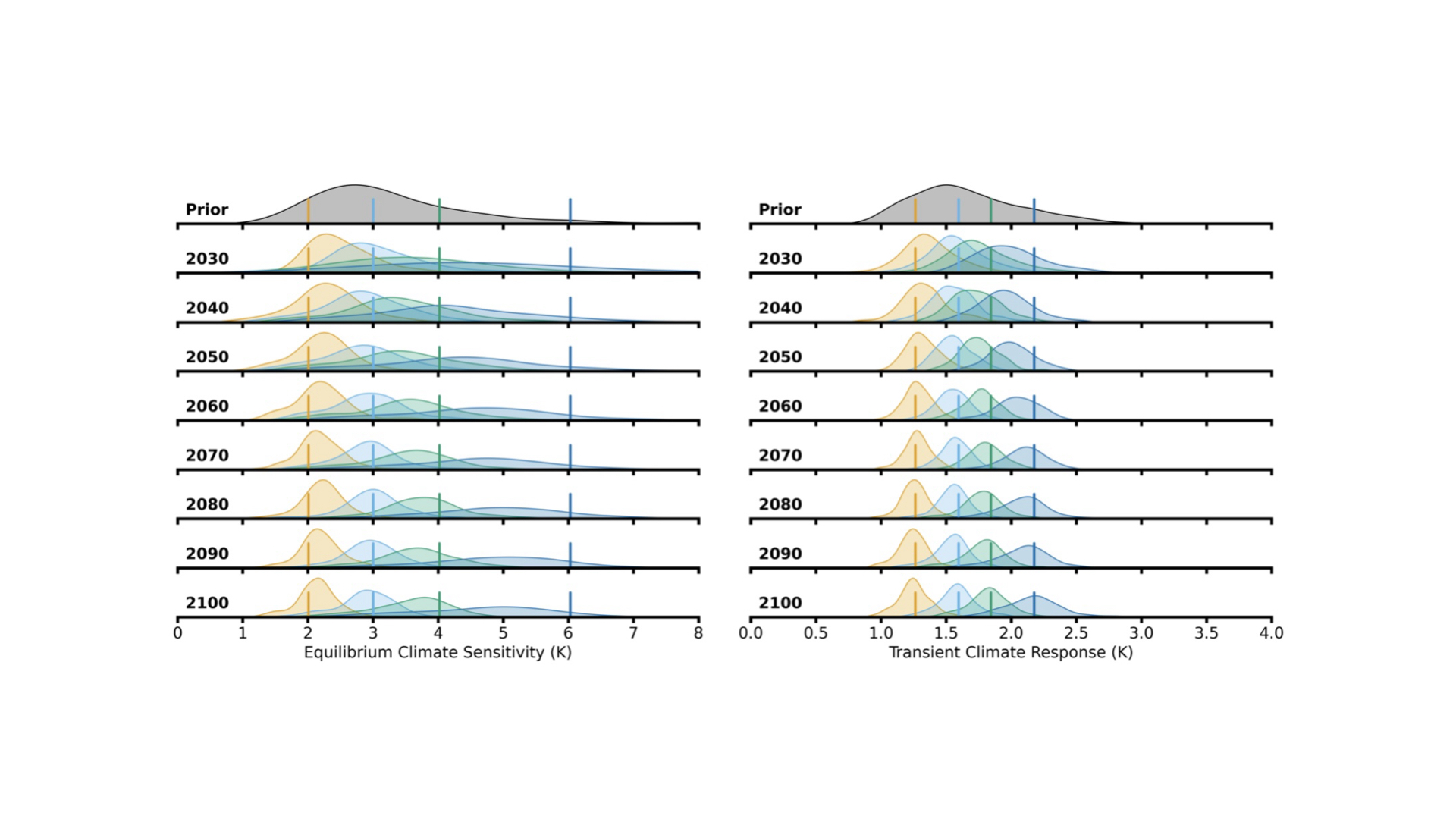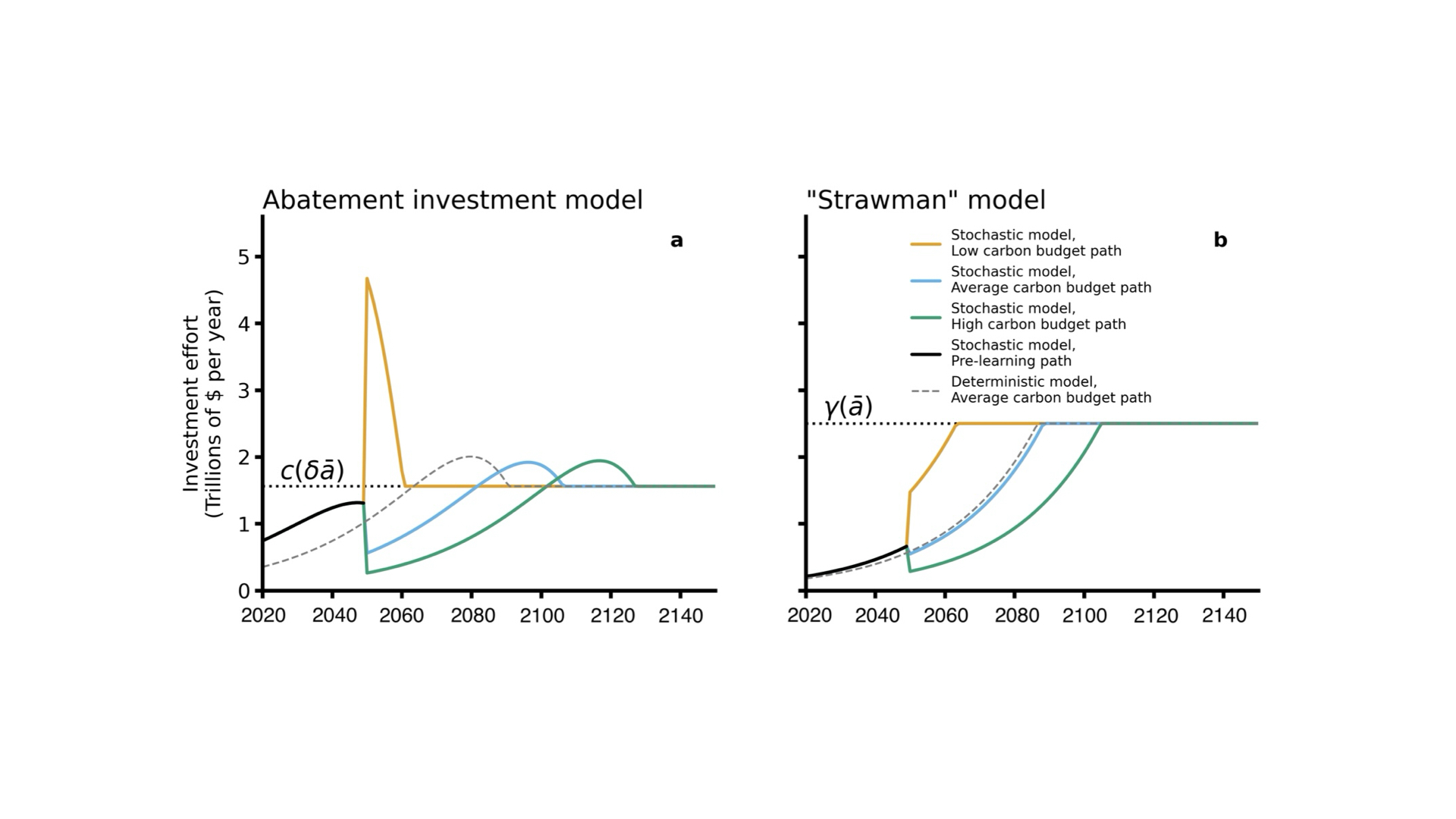Learning Climate Sensitivity from Future Observations, Fast and Slow
In Review at Science Advances

Project goal
As more observations of global temperature, ocean heat uptake, and atmospheric carbon dioxide concentrations become available, the signal-to-noise ratio for carbon-induced warming will grow relative to internal climate variability. It is an open question how efficiently climate models will be able to use additional observations to constrain climate sensitivity and other policy-relevant aspects of the climate system. In this project, we use a variational technique and a two-layer climate emulator to probe how quickly we will learn about key uncertain climate process from simulated future observations.
Abstract
Climate sensitivity has remained stubbornly uncertain since the Charney Report was published some 45 years ago. Two factors in future climate projections could alter this dilemma: (i) an increased ratio of CO2 forcing relative to aerosol cooling, owing to both continued accumulation of CO2 and declining aerosol emissions, and (ii) a warming world, whereby CO2-induced warming becomes more pronounced relative to climate variability. Here, we develop a novel modeling approach to explore the rates of learning about equilibrium climate sensitivity and the transient climate response (TCR) and identify the physical drivers underpinning these learning rates. Our approach has the advantage over past work by accounting for the full spectrum of parameter uncertainties and covariances, while also taking into account serially correlated internal climate variability. Moreover, we provide a physical explanation of how quickly we may hope to learn about climate sensitivity. We find that, although we are able to constrain future TCR regardless of the true underlying value, constraining ECS is more difficult, with low values of ECS being more easily ascertained than high values. This asymmetry can be explained by most of the warming this century being attributable to the fast climate mode, which is more useful for constraining TCR than it is for ECS. We further show that our inability to constrain the deep ocean response is what limits our ability to learn high values of ECS.
Working paper and citation
Citation: Bauer, A. M., C. Proistosescu, K. K. Droegemeier. Learning Climate Sensitivity from Future Observations, Fast and Slow. ArXiv Preprint, 2025.
Collaborators
Cristian Proistosescu and Kelvin Droegemeier (with great help from Jidong Gao).
